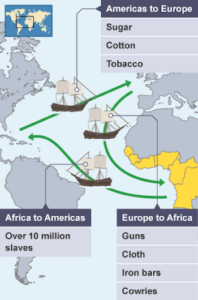
Slave Fortresses in Africa
*Slave Fortresses in Africa are affirmed on December 20, 1441. A fort was built to protect someone or something, and a slave fort or slave castle kept enslaved victims until ships were ready to set them aboard and forcefully kidnap the enslaved people.
A slave fort was a militarized factory (trading post) that evolved at locations where the slave trade played a significant economic role on the west coast of Africa. These forts were built by organizations from nine European countries, whether by the state or chartered companies. In 1441, Henry the Navigator initiated the Portuguese exploration of the African coast. With the newly designed caravel, Portuguese explorers were able to sail further south along the coast.
However, their exploration repeated kidnappings of particularly Berbers who were enslaved and sold at newly created slave markets in Lisbon. Nuno Tristão and Gonçalo de Sintra explored as far south as the Bay of Arguin, where the Portuguese established a trading post on the island of Arguin. Henry ordered the first factory to be built there in 1448; however, there are also records that King Afonso V also ordered a fort built in 1462. Elmina Castle was built in 1482 in present-day Elmina, Ghana (formerly known as the Gold Coast). It was the first of many slave forts constructed by Europeans along the West African coast.
João II decided to build the fort shortly after coming to the Portuguese throne. He appointed Diogo de Azambuja to fulfill the task and supplied him with a prefabricated fort in kit form, along with 600 men. This enabled the fort to be built as the first European prefabricated building in sub-Saharan Africa. The indigenous people did not want the Portuguese to construct the fort despite Azambuja's initial success in some negotiations.